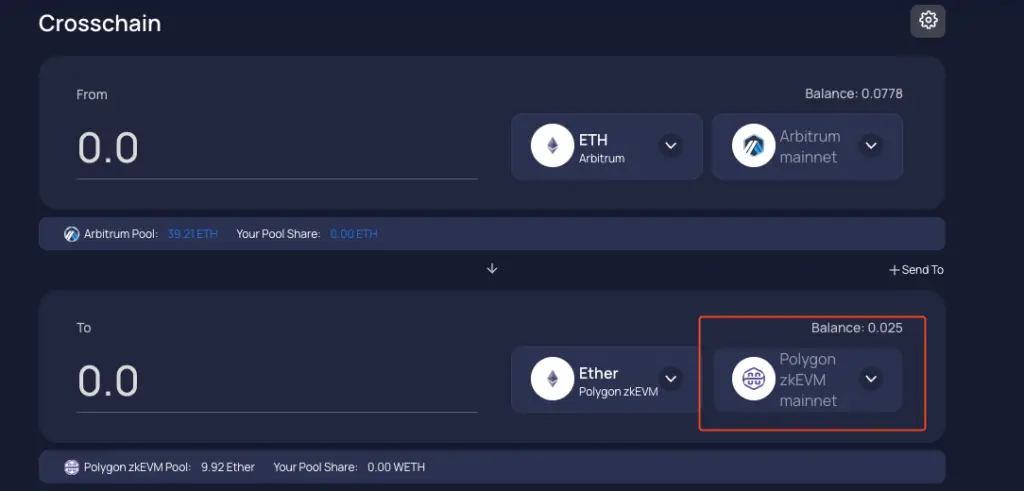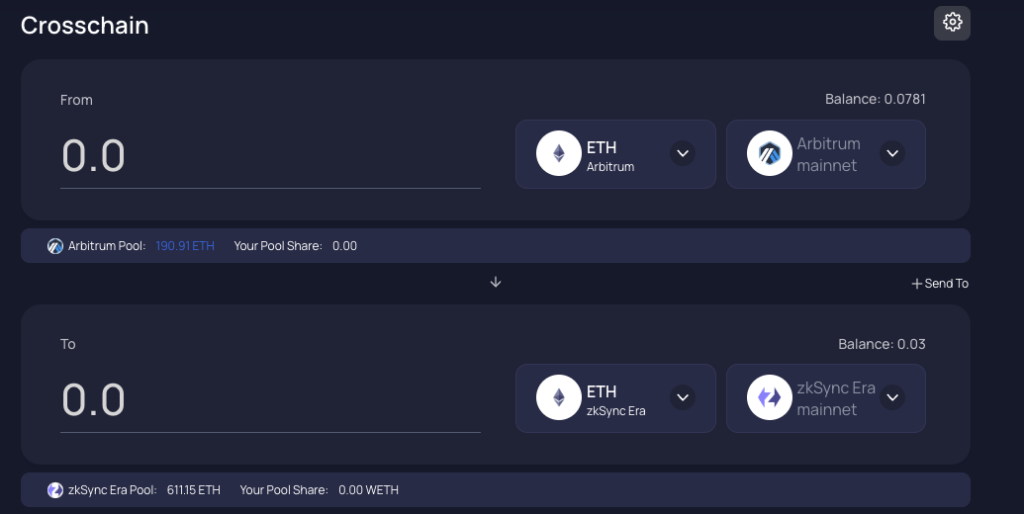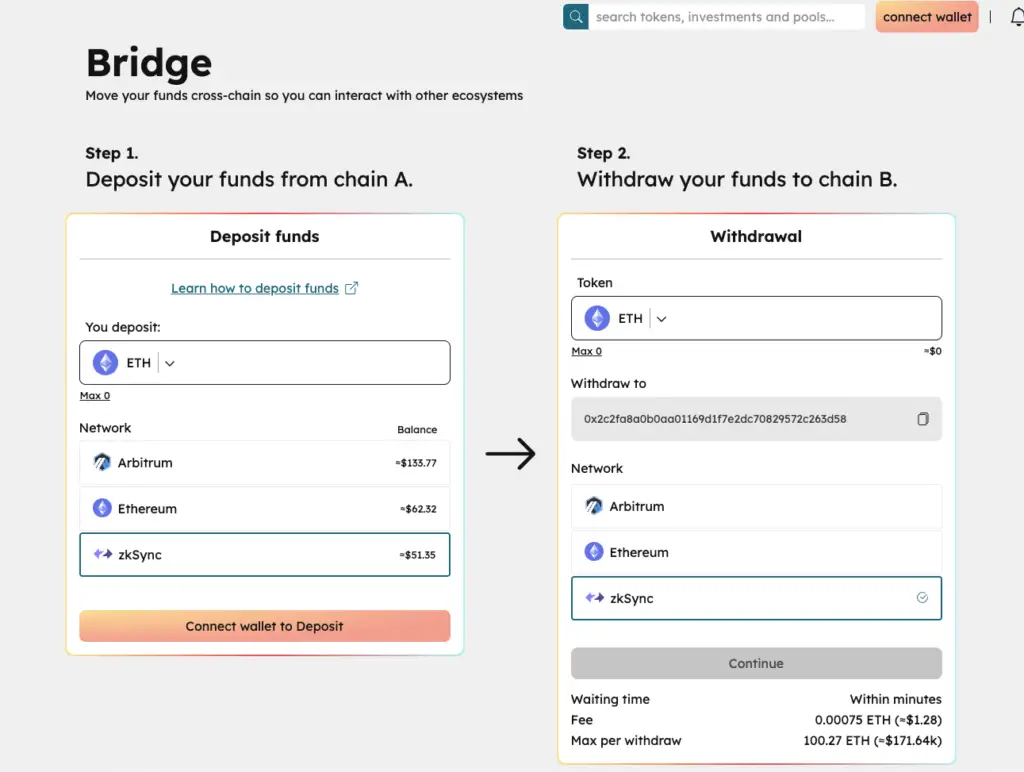With the latest launch of Consensys’ zero-knowledge Ethereum Virtual Machine (zkEVM) Layer-2 network, here are some of the ways you can send your funds over to Linea.
For a complete guide on bridging your funds, you can check out my video here:
With the latest launch of Consensys’ zero-knowledge Ethereum Virtual Machine (zkEVM) Layer-2 network, here are some of the ways you can send your funds over to Linea.
For a complete guide on bridging your funds, you can check out my video here:
The Layer 2 wars have started, and StarkNET is another zk-rollup Layer 2 to keep an eye out on.
What’s interesting about StarkNET is that it is not natively EVM-compatible, so bridging to this network will be different from the likes of zkSync Era and Polygon’s zkEVM.
If you prefer a video guide, you can check it out here:
Before you can bridge your funds over to StarkNET, you will need to create a wallet that supports this network, such as Braavos or Argent X.
I’ve personally created my StarkNET wallet with Argent X, but I don’t think there’s any difference between the 2 wallets.

Even though your wallet address starts with the prefix ‘0x’, it’s actually not EVM-compatible!
StarkNET has its own bridge, but the main drawback is that it only allows you to bridge funds from the Ethereum mainnet to StarkNET.

The fees on the Ethereum mainnet can be very expensive, with each transaction costing about $7 USD!
I personally prefer to bridge my funds from other networks like Polygon, where the gas fees are much cheaper.
This is my platform of choice because it allows me to bridge my ETH from Polygon to StarkNET.

The gas fees are way cheaper, and both the token approval and bridging transaction only cost 1 cent each!
Orbiter Finance charges you around 0.0012 ETH for each bridging transaction, wich is roughly 2 USD.
If you have funds on a centralised exchange like Binance or KuCoin, you can consider using Layerswap instead.

You can send over USDC from the exchange to Layerswap’s address, and they will transfer the USDC to your StarkNET wallet.
The fees are around 2 USDC for this transaction.
Layerswap also provides Cross-Chain transactions, but the limitation is that it does not support the Polygon network, so the cheaper networks would be either Arbitrum or Optimism.
Once you have your funds on StarkNET, you can try out some of the decentralised applications (DApps) that are on the network, as this could potentially help you to qualify for the airdrop!
Do you find it overwhelming to track all of the different airdrops that are available?
I’ve created an airdrop tracker of all the different networks and projects that I’m keeping an eye on,

and you can gain access to it by signing up for my Substack newsletter! The link to this Notion site will be included in the welcome email.
Are you passionate about personal finance and want to earn some flexible income?
Last updated on March 31st, 2023
With the latest launch of Polygon’s zero-knowledge Ethereum Virtual Machine (zkEVM), here are some of the ways you can send your funds over to this brand-new network.
You may want to note that the native token on Polygon’s zkEVM is ETH and not MATIC! This is different from Polygon Proof-of-Stake which uses MATIC as the native token.
If you prefer a video guide, you can check it out here:
There are 2 main links that you can use Polygon’s official bridge to the zkEVM (links here and here).
This link is especially useful if you want to add the official zkEVM network right away.

The main problem with this bridge is that it only allows you to transfer funds from the Ethereum Mainnet to the zkEVM.
You may have to pay gas fees which can amount up to $17 USD!

It’s best not to use this platform, especially if you are only bridging over a small amount of ETH, as the gas fees would not make this transaction worth it.
Side note: the first result on Google brings you to the testnet bridge, and not the beta mainnet bridge. If you are using this bridge, you will be transferring funds from the Goerli testnet on Ethereum to the Polygon zkEVM testnet.

Similar to zkSync Era, Multichain also allows you to bridge funds to Polygon’s zkEVM.

This transaction will cost around 0.0006 ETH (~ $1 USD), and the best part is that you can bridge your funds from other networks like Arbitrum, Optimism or Polygon, where the gas fees are much cheaper than Ethereum.
However, Multichain already has a token, and the platform that I ultimately used to bridge my funds does not, so you could qualify for an airdrop too!
Orbiter Finance is a great way to bridge your funds from other Ethereum L2s to Polygon’s zkEVM.

What’s more, Orbiter Finance does not have a token yet. If they do launch one, they could reward users with a token for using this bridge, so that’s why I chose to use this platform instead.
The fees are slightly higher than Multichain at around 0.001 ETH (~ $2 USD).

However, if you’re frequently bridging funds between Layer 2s, Orbiter Finance may be the best option with the potential airdrop looming.
The transaction was really quick and I was able to receive my funds on the Polygon zkEVM within a few minutes.

While Polygon’s zkEVM may not be the most attractive as the MATIC token has already been released, it could still be a network that can help you to really save on gas fees.
Do you find it overwhelming to track all of the different airdrops that are available?
I’ve created an airdrop tracker of all the different networks and projects that I’m keeping an eye on,

and you can gain access to it by signing up for my Substack newsletter! The link to this Notion site will be included in the welcome email.
Are you passionate about personal finance and want to earn some flexible income?
Last updated on July 23rd, 2023
If you’re looking to send your funds to this new Layer-2 network which is the zkSync Era Mainnet, here are the 4 main platforms that you can use:
For a complete guide on bridging your funds, you can check out my video here:
If you have funds on the Ethereum Mainnet, you can bridge them over using zkSync’s official bridge.

However, when I tried this, the gas fees that I needed to pay were around $5, and this was really expensive.
I would not recommend this method if you only have a small amount of ETH that you wish to bridge over to zkSync.
Multichain is a great option if you have some Ethereum on other Layer 2s like Polygon, Arbitrum or Optimism.

The fees are around 0.0006 ETH (about USD $1), so it’s not really that bad.
Furthermore, the gas fees will be much cheaper than Ethereum, as they should usually cost less than $1.
Rhino Finance is another platform that you can consider, but you are only limited to bridging to zkSync from either Arbitrum or the Ethereum Mainnet.

The bridging fee is quite cheap and costs around 0.00075 ETH (about USD $1.28), while I paid around 30 cents worth of ETH tokens on Arbitrum to get my funds over.
While Orbiter Finance announced that they support the zkSync Era mainnet,
I was unable to find this option when I launched this decentralised application (DApp).

Some people did mention that bridging to zkSync was rather buggy, so I’m not sure if the issues have been resolved.
Otherwise, this is another platform to consider as you can bridge across multiple Layer 2s, which is similar to Multichain.
After getting your funds on zkSync, you may want to consider interacting with some of the decentralised applications (DApps) to qualify for the potential zkSync airdrop.
The gas fees are still rather expensive, and it may cost you around $1 per transaction, so you may want to bridge more funds to this network.
Do you find it overwhelming to track all of the different airdrops that are available?
I’ve created an airdrop tracker of all the different networks and projects that I’m keeping an eye on,

and you can gain access to it by signing up for my Substack newsletter! The link to this Notion site will be included in the welcome email.
Are you passionate about personal finance and want to earn some flexible income?